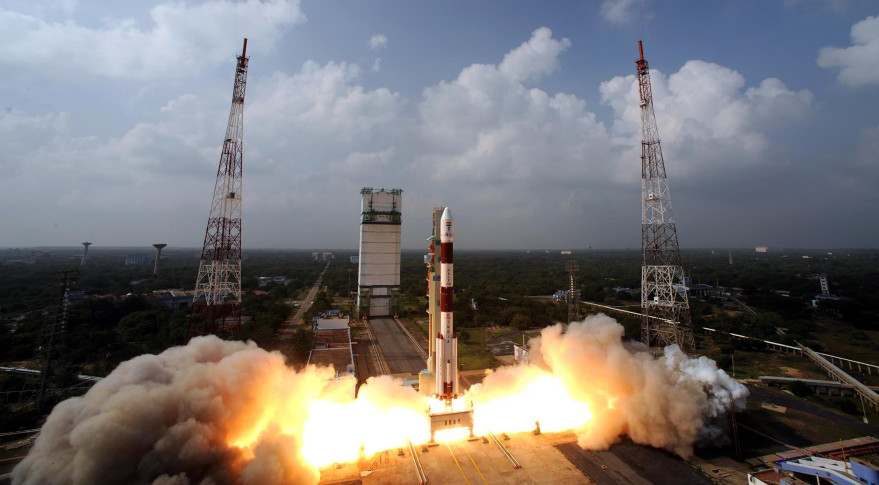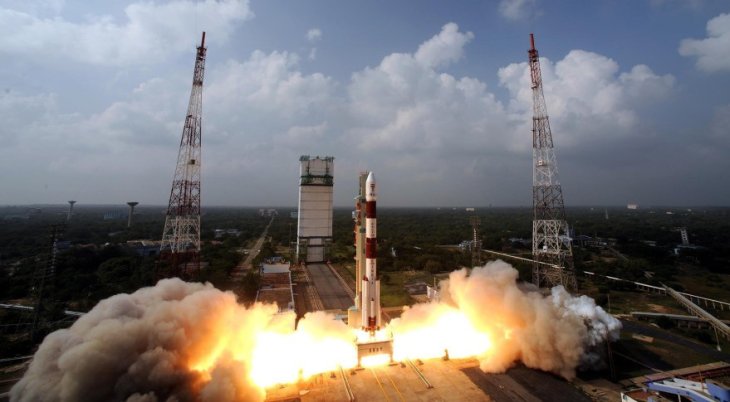A New Design Makes Rockets More Fuel-Efficient, Lighter, Easier To Construct, May Help ISRO In Future Missions
Dhir Acharya - Feb 21, 2020

Researchers have developed a model that will make rockets more fuel-efficient, which may help reduce the cost of launching rockets in the long run.
- Chinese Rocket’s Failed Launch, Throwing Large Debris Onto Two Villages
- Man Built Space Rocket From 1 Million Matches And It Actually Flew
- This 64-Year-Old Man Died While Trying To Launch Himself Into The Sky With A Homemade Rocket
Launching something into space requires a huge amount of fuel. For example, to send the Space Shuttle into orbit, NASA had to use over 1,587 kilograms of fuel, which is even heavier than 15 blue whales together. However, with the new rotating detonation engine, rockets will be more fuel-efficient, easier to construct, and more lightweight. The only problem is that for now, this engine is too unpredictable to use for an actual rocket.

Researchers of Washington University have developed a mathematical model describing how the engine works. Engineers can use this information to develop tests for improving these engines as well as increase their stability. The findings were published early last month.
James Koch, a doctoral student at UW in astronautics and aeronautics, lead author of the research, said that the filed of rotating detonation engines is still in the early phase.

Traditionally, a rocket engine burns propellant then pushes it out of the engine’s back to generate thrust.
According to Koch, a rotating detonation engine uses a different approach when combusting the propellant. The engine is made of concentric cylinders. First, propellant flows between the cylinders through the gap, then after ignition, the release of rapid heat creates a shock wave, a strong gas pulse that has a much higher temperature and pressure that’s moving faster than sound speed.

Fundamentally, this combustion is a detonation, but behind the initial start-up phase, the researchers see several combustion pulses form, which continues to take up available propellant. That generates high temperature and pressure driving exhausts out of the engine’s back at high speeds, creating thrust.
with traditional rocket, we need much machinery for directing and controlling the combustion reaction to create what’s needed to propel the engine. In a rotating detonation engine, however, the shock wave just does all the work naturally without needing engine parts. Koch said:

To described how the engines work, the research team developed an experimental rotating detonation engine that they were able to control parameters, like how big the gap is between the cylinders. Then, they used a high-speed camera to record the combustion processes, at 240,000 frames per second. It took only 0.5 seconds for each experiment to complete, but the researchers could see that in slow-motion.
From there, the research team created a mathematical model with the aim of mimicking what they saw. J. Nathan Kutz, a professor of applied maths at UW, co-author of the research, said:

With the model, for the first time, the research team could determine if this type of engine would be stable or not. For now, however, the model is not ready for use.
>>> ISRO Plans To Build India's Space Station
Featured Stories

Features - Jul 01, 2025
What Are The Fastest Passenger Vehicles Ever Created?

Features - Jun 25, 2025
Japan Hydrogen Breakthrough: Scientists Crack the Clean Energy Code with...

ICT News - Jun 25, 2025
AI Intimidation Tactics: CEOs Turn Flawed Technology Into Employee Fear Machine

Review - Jun 25, 2025
Windows 11 Problems: Is Microsoft's "Best" OS Actually Getting Worse?

Features - Jun 22, 2025
Telegram Founder Pavel Durov Plans to Split $14 Billion Fortune Among 106 Children

ICT News - Jun 22, 2025
Neuralink Telepathy Chip Enables Quadriplegic Rob Greiner to Control Games with...

Features - Jun 21, 2025
This Over $100 Bottle Has Nothing But Fresh Air Inside

Features - Jun 18, 2025
Best Mobile VPN Apps for Gaming 2025: Complete Guide

Features - Jun 18, 2025
A Math Formula Tells Us How Long Everything Will Live

Features - Jun 16, 2025
Comments
Sort by Newest | Popular